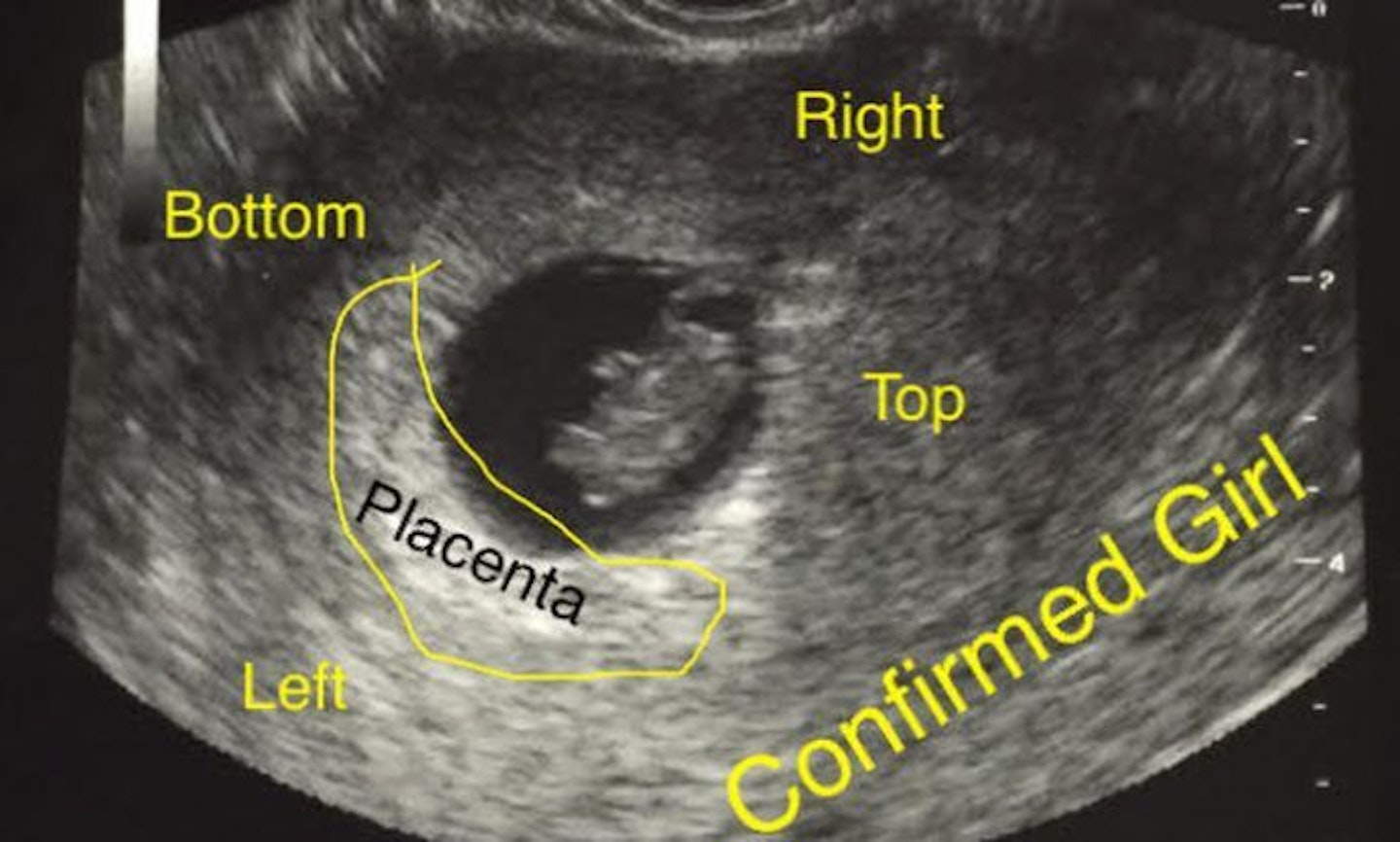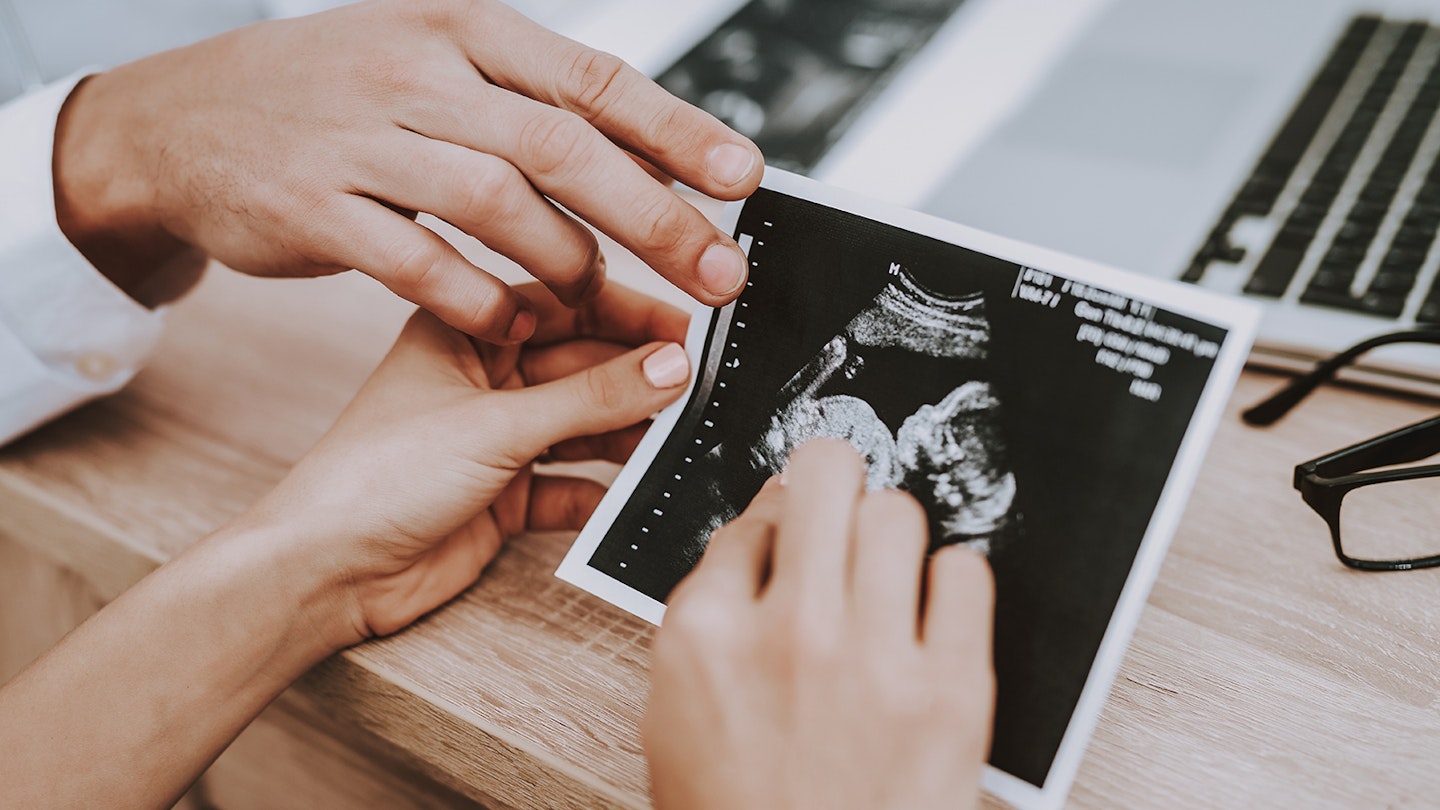Have you ever come across the Ramzi Theory (or Ramzi Method as it's sometimes called)? This gender predicting method has been claimed by users to be 97% accurate when it comes to working out what sex your baby is before your 12 week scan, but how exactly does it work, what do the experts think and, most importantly, is it accurate?
What is the Ramzi Theory?
It's a theory that your baby's sex can be determined, based on the location of the placenta in the first ultrasound during the 6 week scan. This theory can be used for both an abdominal scan and a transvaginal scan (where a wand is inserted up the vagina).
• Placenta implanted on the left = girl
• Placenta implanted on the right = boy
However, make sure you read your ultrasound correctly. If you have an abdominal ultrasound, the results are mirrored. If you have a transviginal scan, it should be the correct way and you'll get a clearer image.
So if your placenta is on the right, that actually means it's on the left (suggesting a girl). If your placenta is on the left, that means it's actually on the right (suggesting a boy).

(Picture credit::a[Pinterest]{href='https://www.pinterest.co.uk/pin/682717624742938555/?lp=true' target='_blank' rel='nofollow noopener'})
According to ObGyn.net, Dr. Saad Ramzi's method is using placenta /chorionic villi location as a marker for fetal gender detection at 6 weeks gestation and according to some studies, was found to be highly reliable.
How to read your scan
It can be hard to read your scan, so it's always best to ask the experts when trying to identify which side your placenta is on. If you ask your ultrasound technician during your 6-8 week scan, they should be able to identify and let you know which side it is on. If you're unable to ask, look for the brighter area around the gestational sac.
Your technician will also be able to help explain the orientation to make sure you're locating the placenta on the correct side, taking into account the mirror image.
Is the Ramzi Theory accurate?
Allegedly, this theory is over 97 per cent accurate when it comes to predicting your baby's sex. One study by ObGyn.net found that this method correctly predicts the fetus gender in 97.2 per cent of males and 97.5 per cent of females early in the first trimester. And it might be helpful to use as a genetic soft marker in relation with fetal pyelectasis.
However, despite the bold claims, gender prediction theories are only supposed to be a bit of fun, so don't deck out the nursery just yet!
It's also important to note that this study hasn't been published in any scientific journals yet, which means it hasn't been scrutinised by doctors and medical experts. Furthermore, Dr Ramzi isn't an actual medical doctor, he instead has a PhD in Public Health as well as a master’s degree in medical ultrasounds, which means his credentials may not be adequate
When is it best to use Ramzi Theory?
It's best to determine at your 6-8 week scan. For 12 weeks plus, you're better off trying the nub theory.
You can request to find out your baby's sex during your mid-pregnancy ultrasound, which is technically done between 16-20 weeks.
Ramzi theory FAQ's
Does the Ramzi theory work for twins?
There have been very little studies done with twins and predicting their gender using the Ramzi theory, so it's harder to predict in the early stages whether you're having two boys, two girls or one of each. Often with twins, there will be two placentas so you have to look out for the placing of both placentas rather than just one.
Does it matter which ovary I ovulated from?
No. An egg can be released from the right ovary and plant on the left and vice versa so this doesn't affect the side your placenta appears.
